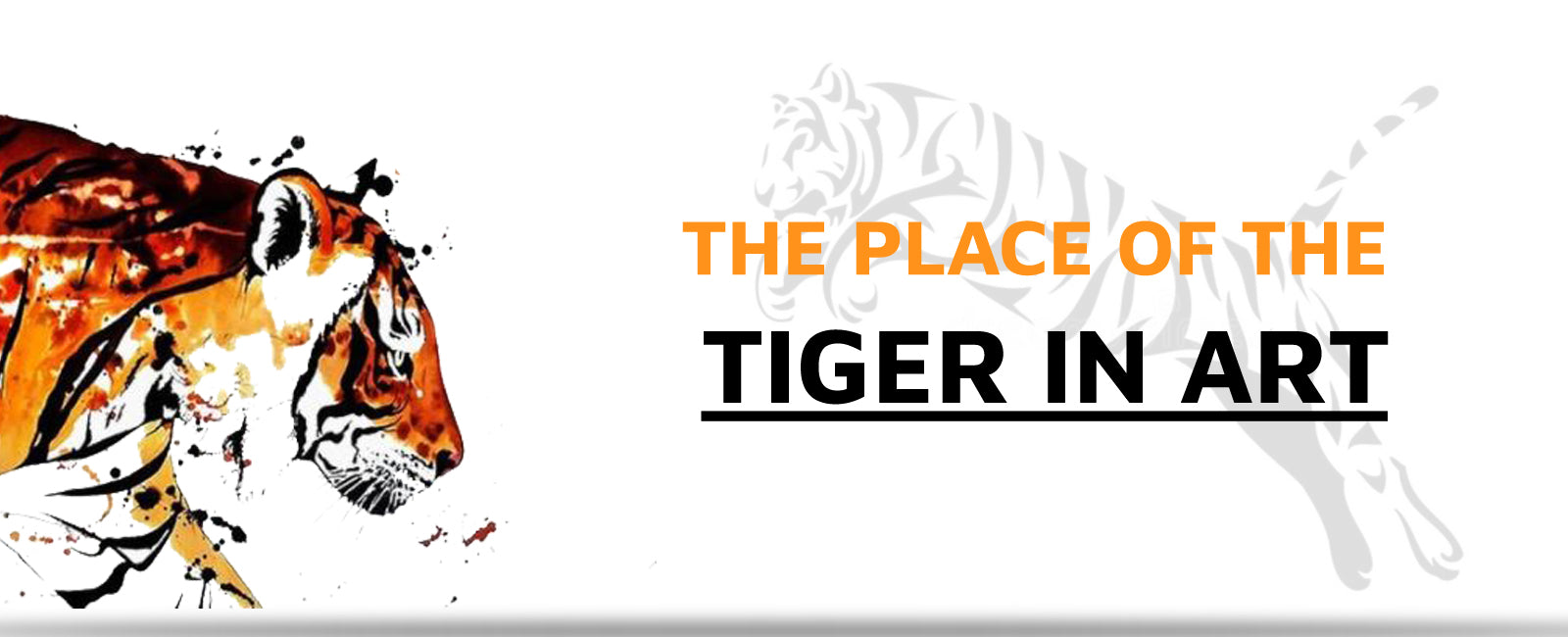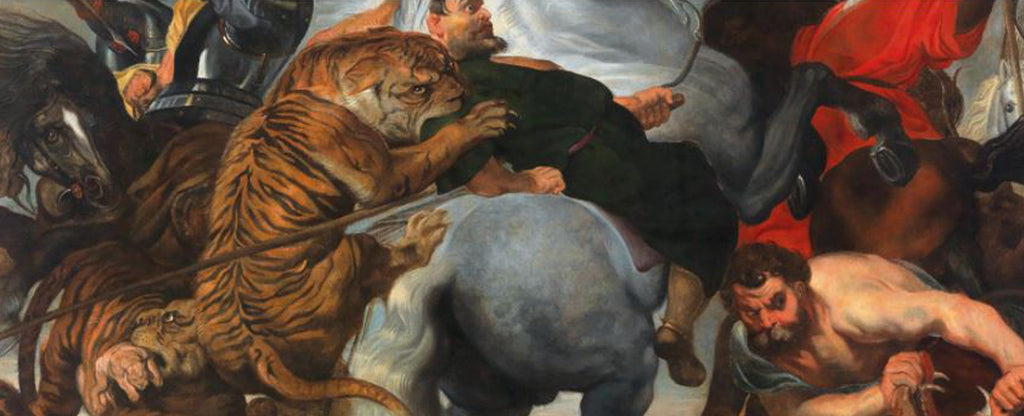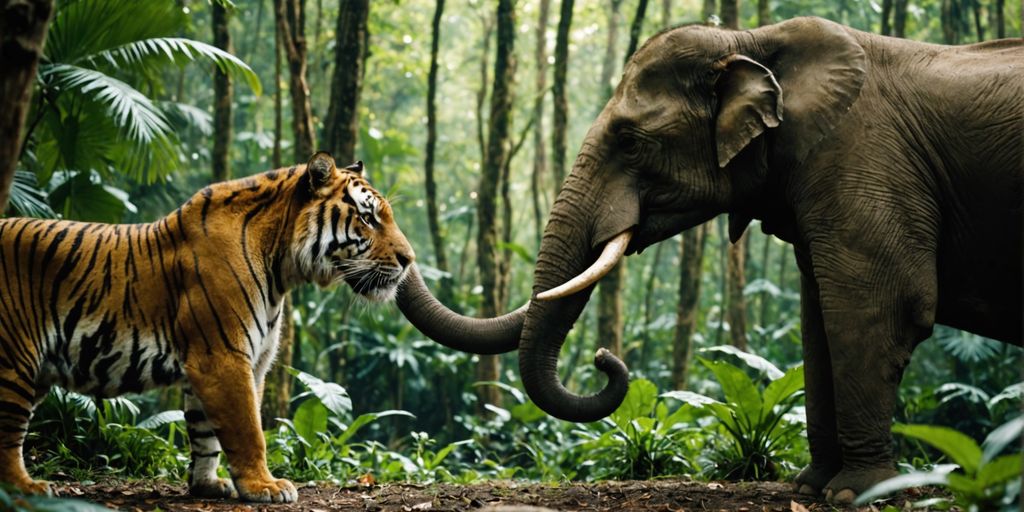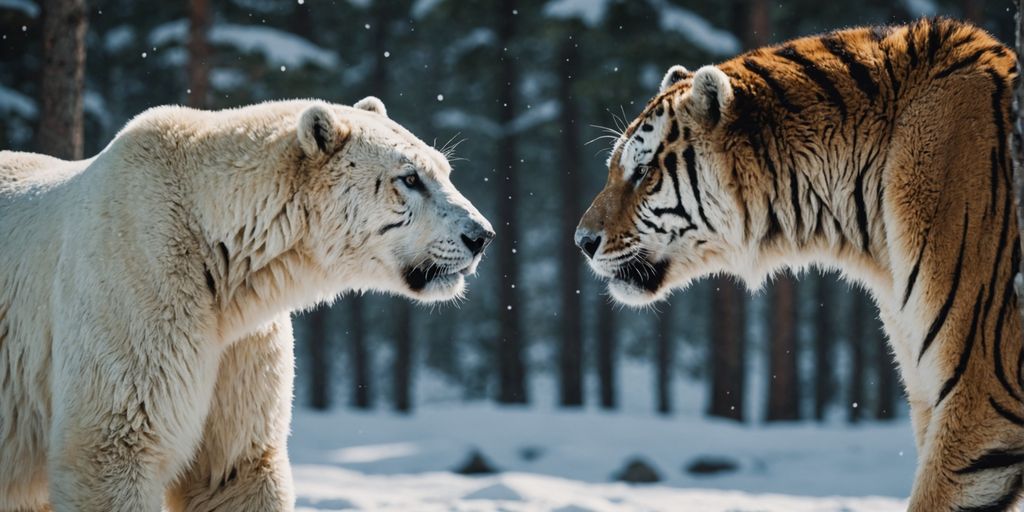Your Cart is Empty
🙏HELP US SAVE TIGERS!🐅 WE DONATE 1% OF OUR SALES TO WILDLIFE ORGANIZATIONS ( WWF ...)
Menu

🙏HELP US SAVE TIGERS!🐅 WE DONATE 1% OF OUR SALES TO WILDLIFE ORGANIZATIONS ( WWF ...)
The Place of the Tiger in Art
May 28, 2021 5 min read

What is the place of the Tiger in Art? In what ways is the animal put forward in the contemporary world?
Tiger-Universe is THE English-speaking reference regarding this magnificent fawn. 🐯 Passionate about the subject, we decided to answer these questions in the slightest detail.
The Tiger has an important place in the artistic universe. The image of the Tiger is well present, and it fascinates the minds ever, especially since the beginning of the Baroque Art in Painting. It ends up at the end of the Second World War in the cinema but also in fashion.
In this article, you will learn the meanings of this big cat in the art world. But also how the Tiger is put forward since the late 16ᵉ century.
Let us begin without further ado. 👇
Significance of the Tiger in Art
One of the things the Tiger is known for is its strength and power. It is not called the "King of Animals" for nothing in Asia. Nevertheless, we will see that it represents much more than that, especially in the field of Art. He also arouses a lot of admiration and fear. Some cultures revered him. He has various representations, especially in the art world. Let's take a look at four of them together. 🐅
1) An Important Chinese Zodiac Sign
In China, the feline is considered an element in its own right in the Chinese calendar. It is indeed the third sign of the Chinese zodiac. Its element is wood, and it is very often associated with the Yang element. For the Chinese, the Tiger best represents Justice. It is adored and revered by them since ancient times.
The animal also has its place in Chinese Painting, and many artists paint it. The village of Wanggongzhuang in Henan province is famous for painting the Tiger, which can be seen everywhere on the walls, along the streets. The painters of this village are well-known in the art market. They have the reputation of being the "first village in China" to paint tigers.
2) A fierce animal
The Tiger has always been seen as one of the most ferocious animals, whether in the West or the East. In the West, for example, the Romans often represented in the form of mosaics. However, in the most famous Painting, "The hunting of the tiger, the lion, and the leopard," that the animal is the most frightening. 🎨
In this Painting, Peter Paul Rubens wanted to represent the Tiger's ferocity and other wild animals such as a leopard and a lion in the early 17ᵉ century. The painter plays here on the contrasts between warm and cold colors and between animals and men. He could not have better represented the bestiality of these creatures than through this battle.
3) A great Divine Figure
The Tiger is a strong, even divine figure in many Asian countries such as China and Japan. This is also the case in Korea. In the past, Korea was called the "Land of Tigers" or even the "Land of Exceptional People Who Know How to Tame Tigers."
Koreans have revered the Tiger in many ways throughout their history. In particular through funerary Art, in the form of statues, paintings, etc. It is even present through the myth of Tangun. 🙏
Koreans have, moreover, never represented the tiger roaring. Quite often, it is instead depicted with a cheerful smile. This style undoubtedly reflects the joyful and optimistic Korean spirit.
4) Feng Shui Icon
The fawn is one of the most foremost representations of Taoist Feng Shui art. Through various objects with its puppet, such as tiger statues or paintings, the fawn keeps away negative energies and contributes to the harmony of man with his environment. 🧘
It is usually instead placed on the right because it is rather associated with the northeast cardinal point. It is also better not to put it in a metallic area as we had seen that it was associated with the wood element. In summary, it is a good guardian for the house.
The Tiger and Art
We have just seen all the principal meanings of the Tiger in Art. Now let's find out how it came to be used in Art. We will see that from the baroque to the contemporary, the Tiger has been a great inspiration. 🖼️
1) In Painting
The Tiger is represented in Art since antiquity in the West. However, there is "The Tiger Hunt" by Ruben during the Baroque period that we had discussed earlier among the most famous and oldest works. Eugene Delacroix also tackled the animal in the 18ᵉ century. He painted six paintings featuring the Tiger. Except in his work "The Indian devoured by a tiger," the painter does not represent the Tiger in its fierce and cruel form. 🙀
Then, Henri Rousseau was renowned for his works representing the Jungle with numerous animals such as the striped fawn. Then came Charles Lapicque, who used to painting tigers in zoos, especially the one in Vincennes. Finally, Franz Marc, representative of expressionism with his Painting of a tiger represented with geometric forms.
2) Cinema
The Tiger is represented in the cinema through more than thirty films. And again, we are only talking about Western movies. In India and Asia, there must easily be more than a hundred. There would be so many that it would be difficult to list them all. 🎥

3) Art Deco Tiger
Tigers have been used as Art and deco for centuries, not to mention millennia. However, as we have seen, it is since ancient times that the big cat is represented through statues of wood, copper, bronze, and many others. They also adorn temples throughout Asia.
We owe all this mainly to Feng Shui, which puts this animal in honor. Today, these practices continue. The animal fascinates the spirits, and it's not about to stop. We can, for example, note that the Tiger is sometimes represented on Japanese incense burners, a decorative object quite representative of this culture.
4) The Tiger Tattoo
Tattoos are another form of Art where the Tiger also has its place. From the simple portrait of the animal to the fantastic motifs, flaming or with other animals such as the butterfly, the wolf, or the lion, there are many tattoos of this style. These have their small success in the world of tattoo lovers, often symbolizing strength, power, and unpredictability. 💉
Whether it is marked on a woman's skin or a man, it has a strong meaning. It depends on who wears it and who looks at it. The implications of tiger tattoos are numerous and almost endless.
5) In the Fashion World
Being at the base rather than represented as decorative objects, the Tiger has managed to reach the fashion world. Big brands even use the animal to assert themselves even more. 👚
CLOTHING
You can find the Tiger everywhere, in t-shirts, sweaters, sweatshirts but also as an ornament on belt buckles, shoes, or even leather jackets. The fawn adds a unique and offbeat style. Nothing can resist the presence of the wearer.
JEWELRY
There is no limit to how the Tiger can be used in Art. In recent years the Tiger has taken on an incredible proportion in the jewelry world. It has a more than the respectable place as well as in fashion. Flaunting a tiger ring 💍 can just as readily be a sign of poise as it is of respectability or charisma.
Do you also incorporate the Tiger into your Art?
There is no denying that the Tiger was and continues to have an essential symbolic status throughout the world. The majestic Tiger is not about to disappear from paintings, movies, sculptures, tattoos, and more. Artists are not likely to run out of inspiration with this feline. 🖌️
We were able to see together what the Tiger symbolized through Art. From the Baroque period to contemporary Art. Now you know how it is used and what its meanings are. For you, art fanatic, we have selected our best paintings of decorations with the effigy of the Tiger. Discover them by clicking on the image below.
Also in Tiger Blog

Sloth Bear vs Tiger: Who Would Win?
July 13, 2024 7 min read
Explore the thrilling showdown between a sloth bear and a tiger, analyzing their strengths, behaviors, and survival tactics.
Read More
Tiger vs Elephant: Who Reigns Supreme in the Animal Kingdom?
July 13, 2024 7 min read
Explore why elephants usually triumph over tigers in the wild, highlighting their size, strength, and defensive prowess.
Read More
Epic Battle: Polar Bear vs Tiger, who win?
July 11, 2024 8 min read
Epic showdown: Polar Bear vs Tiger. Discover who would win in this thrilling battle of nature's fiercest predators.
Read More